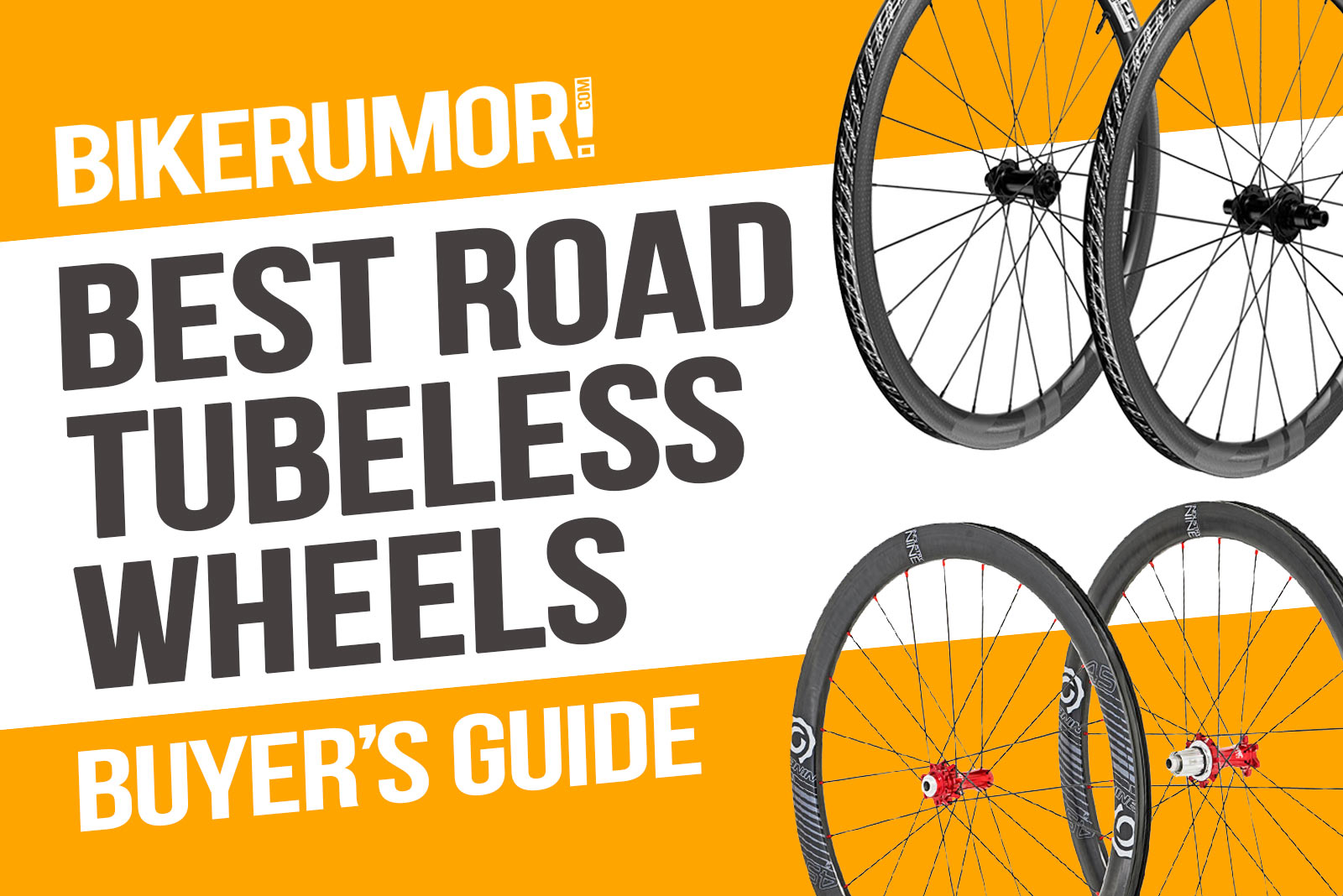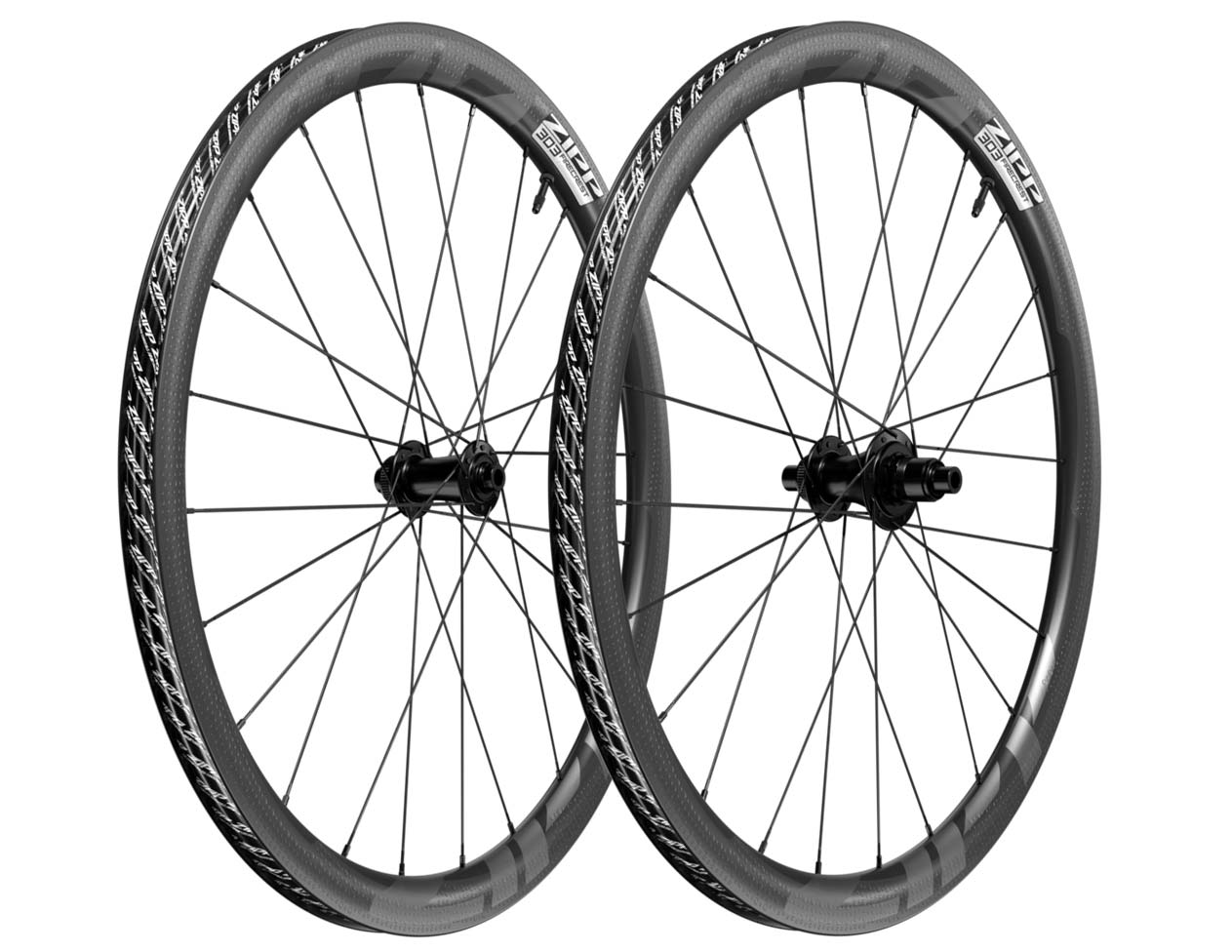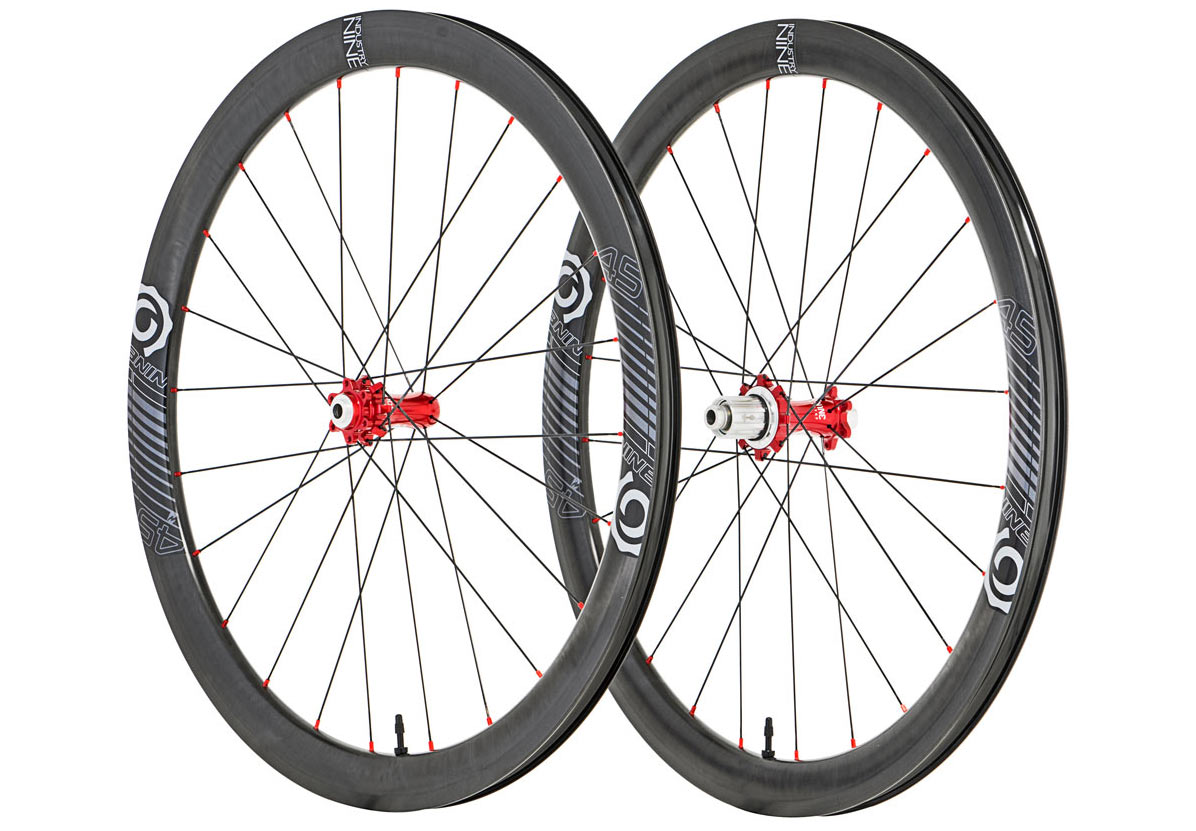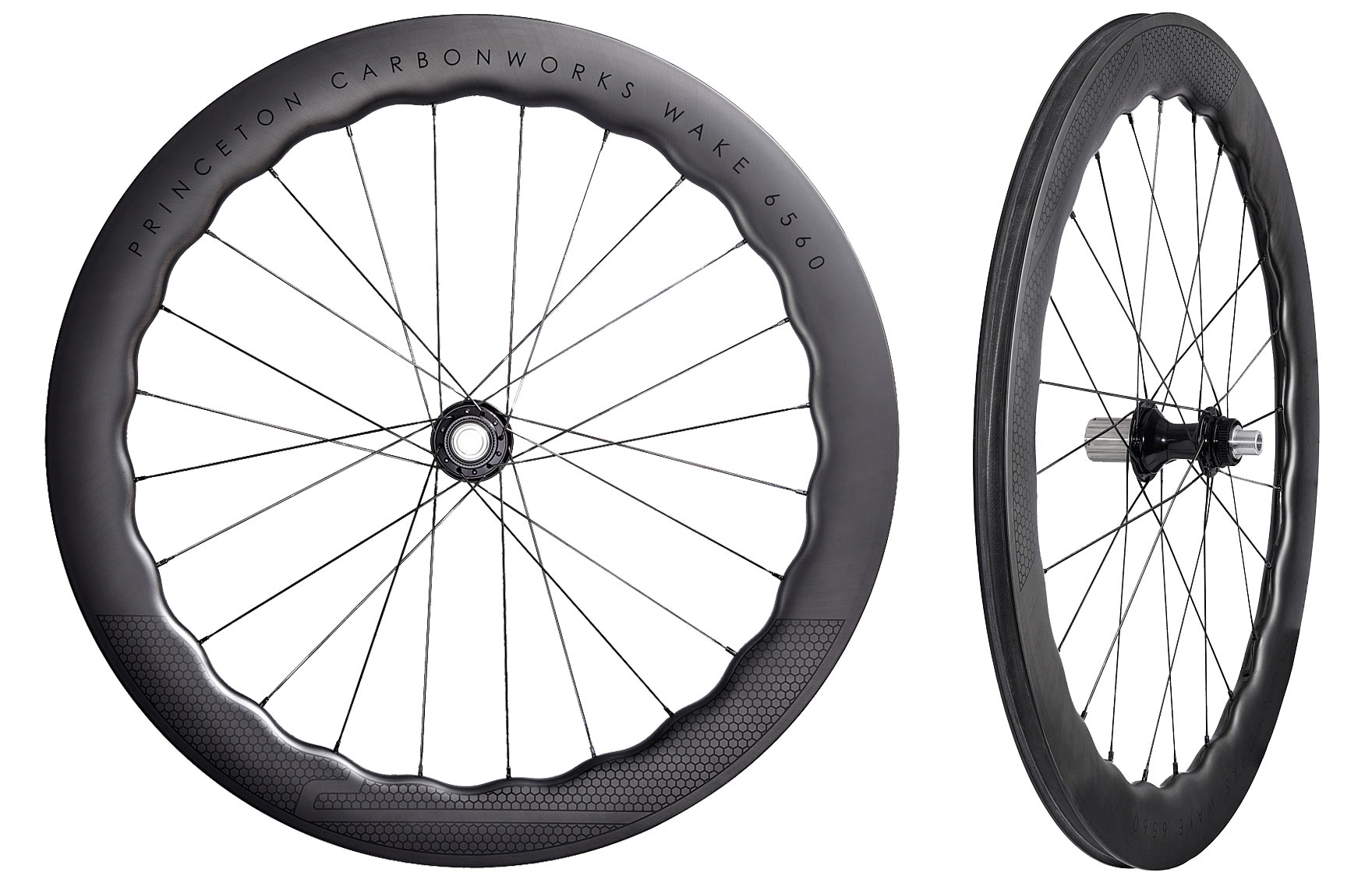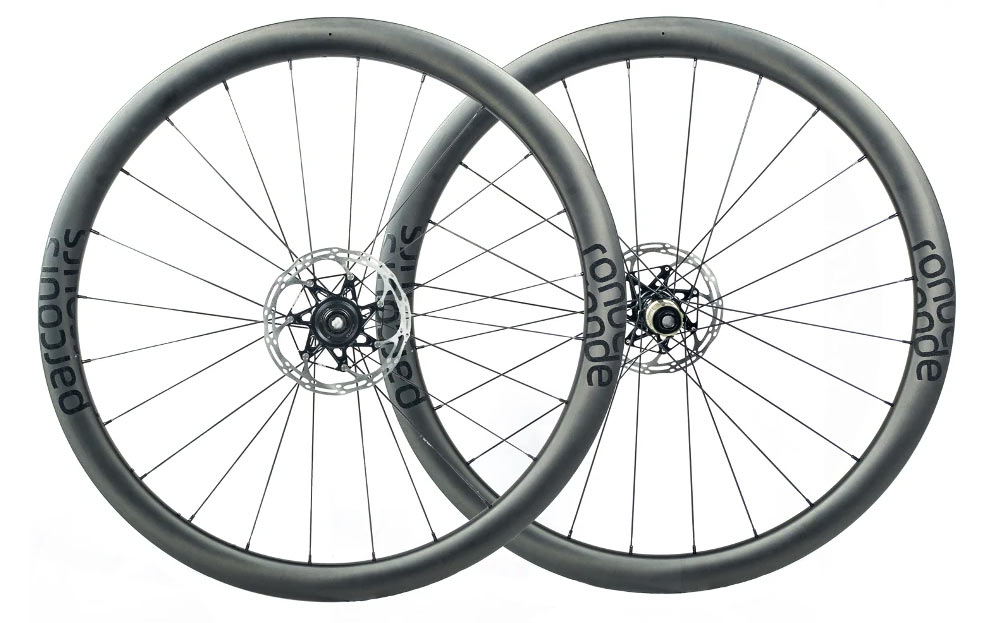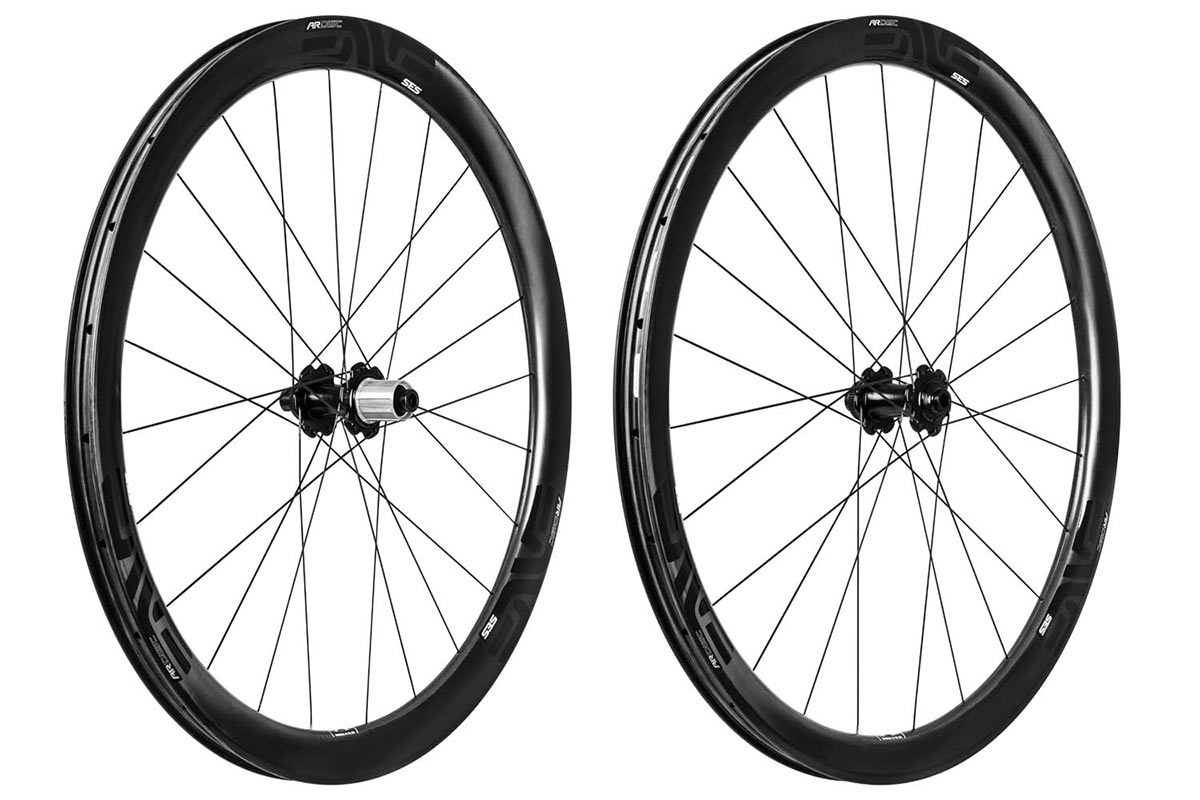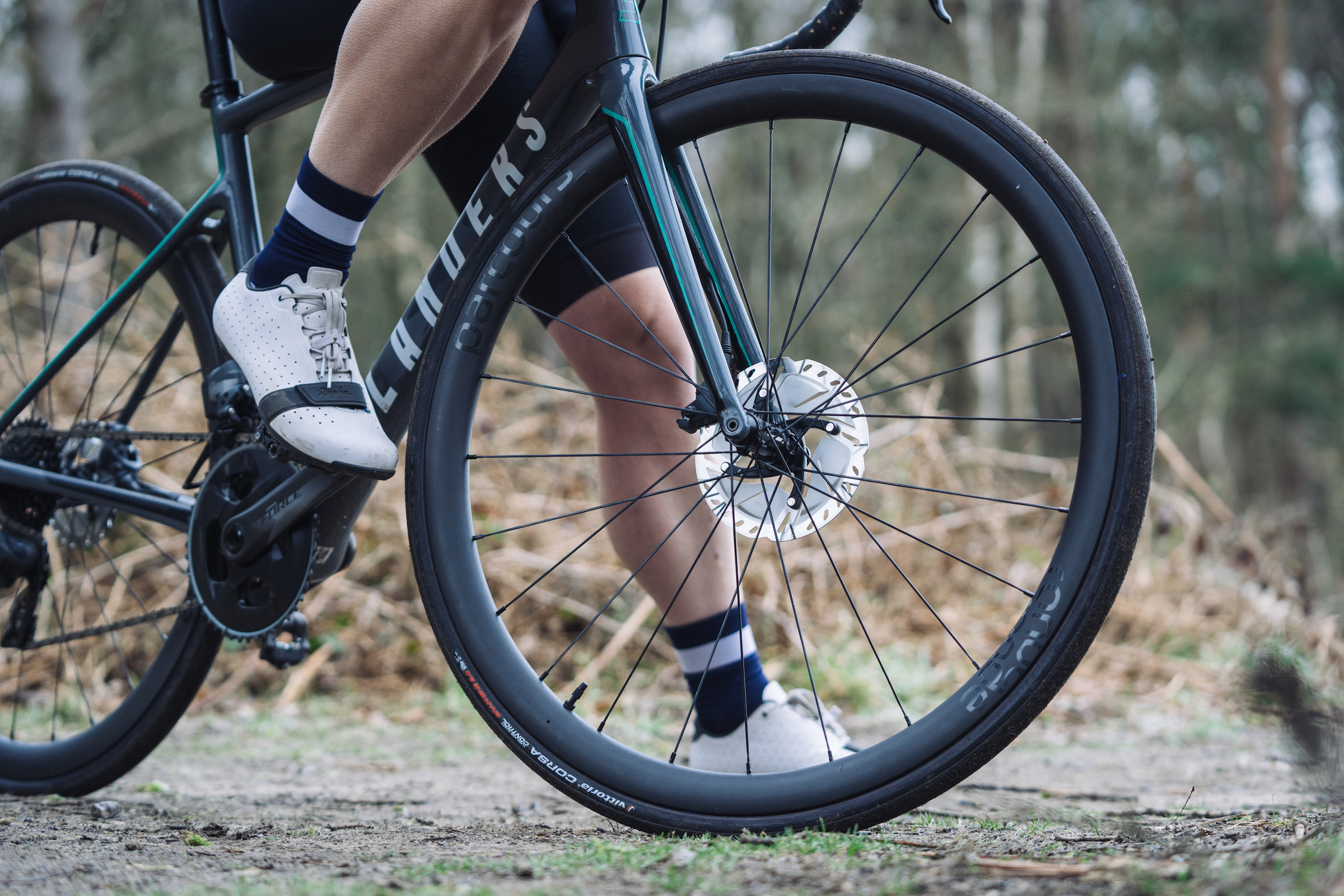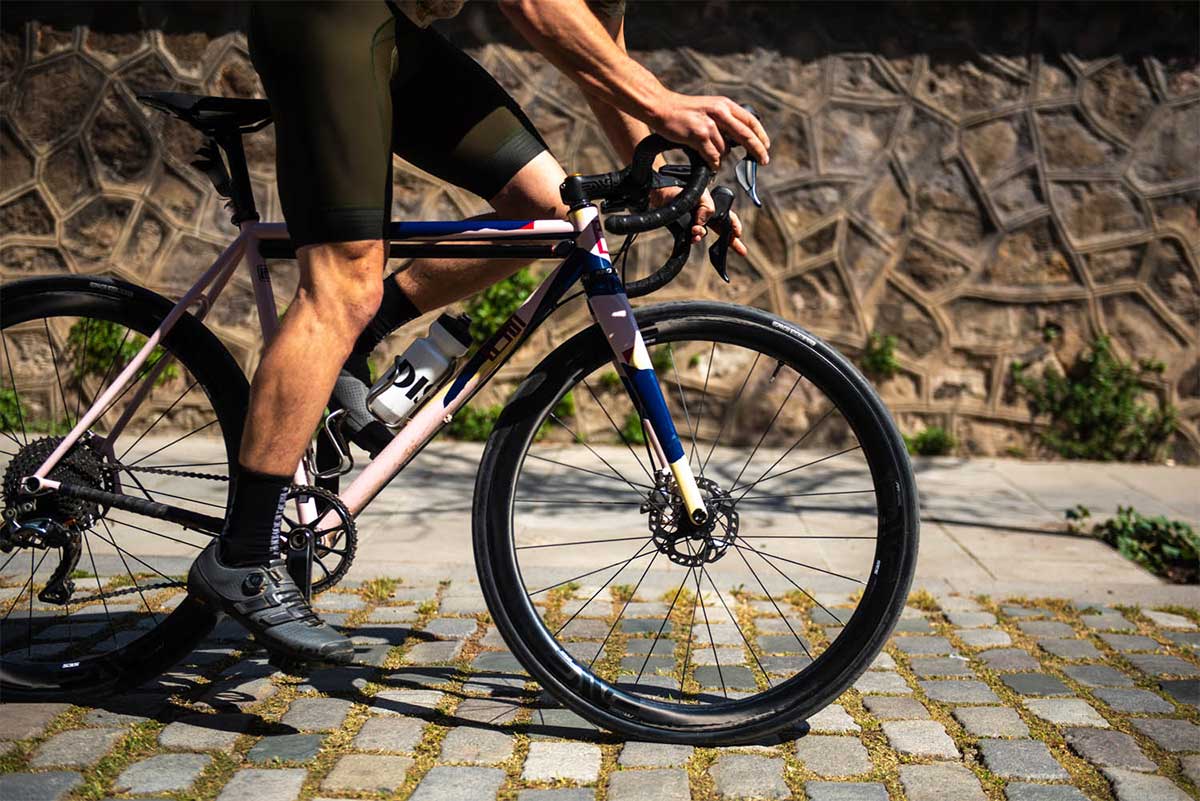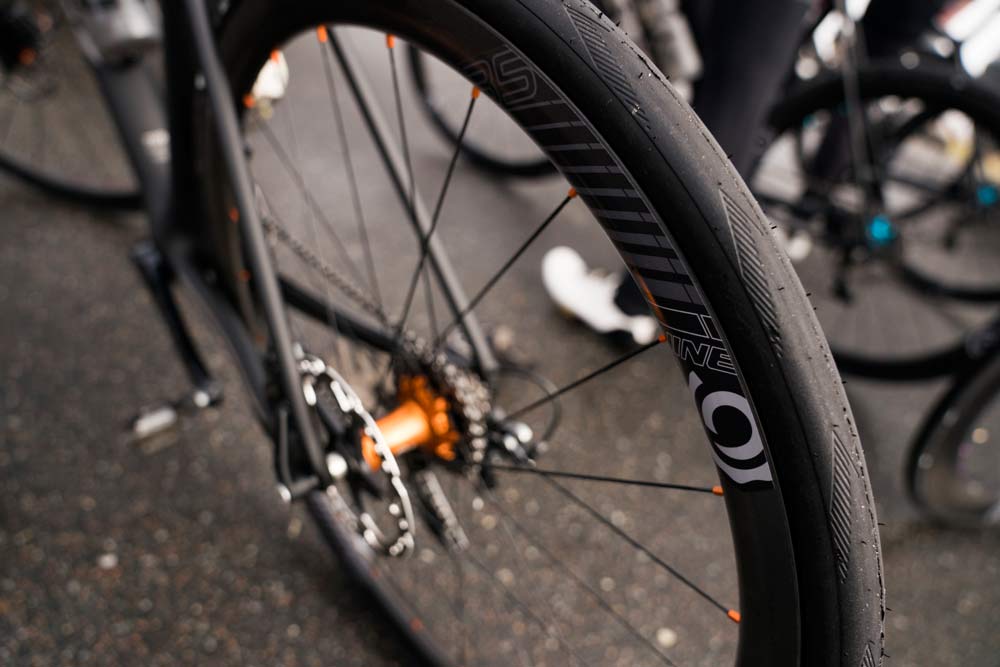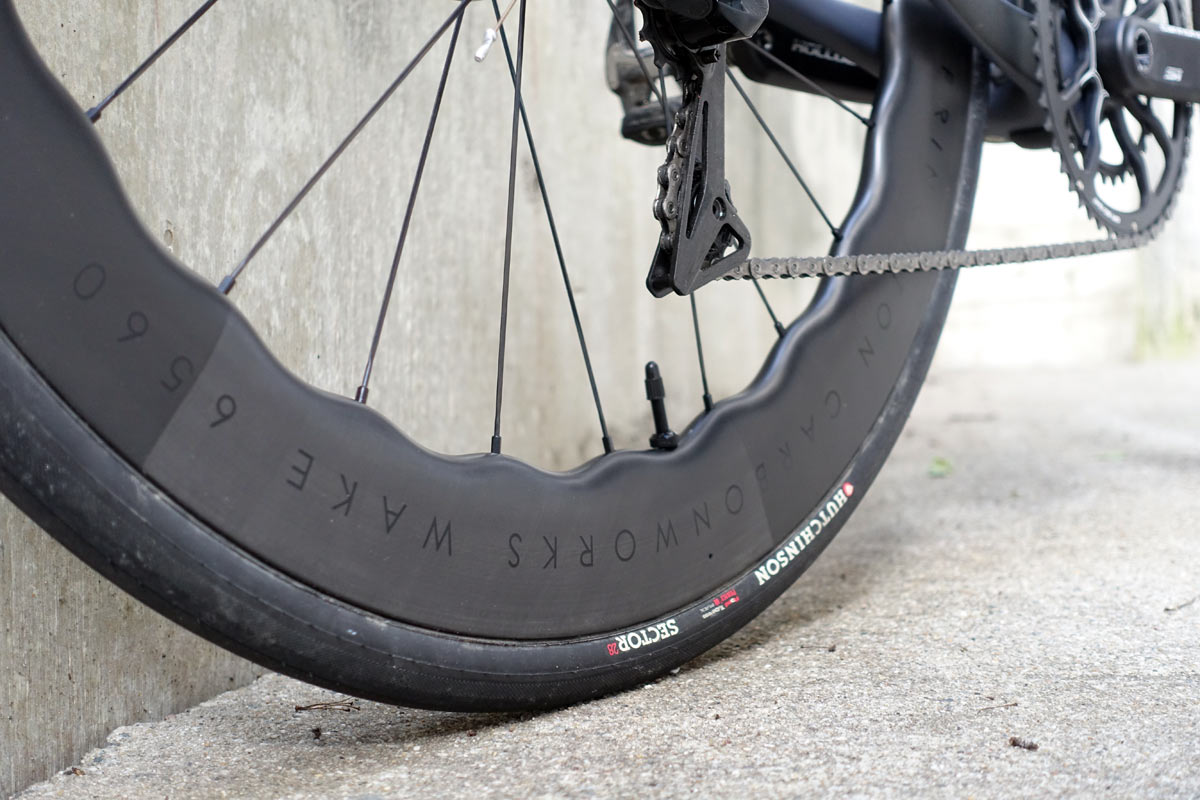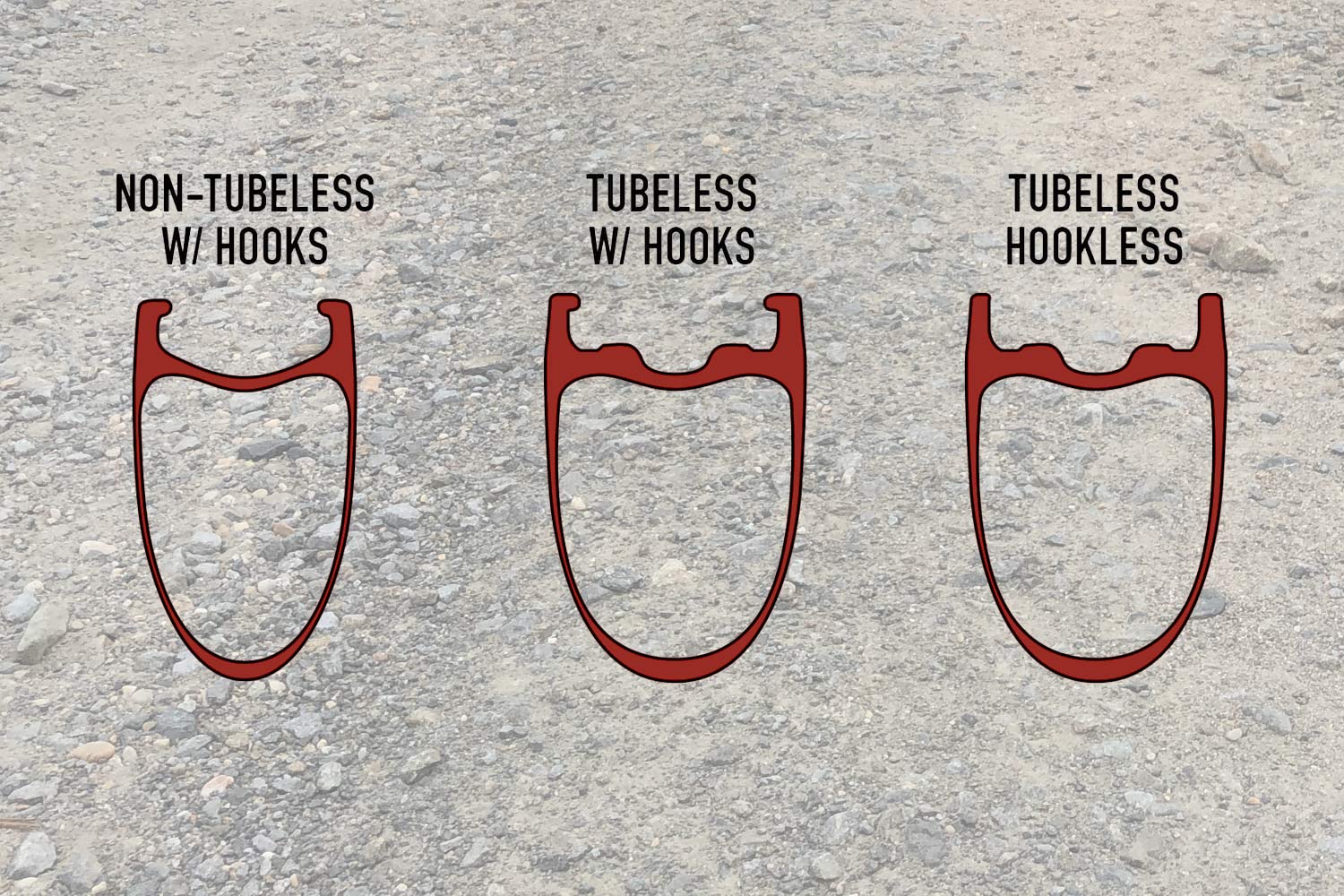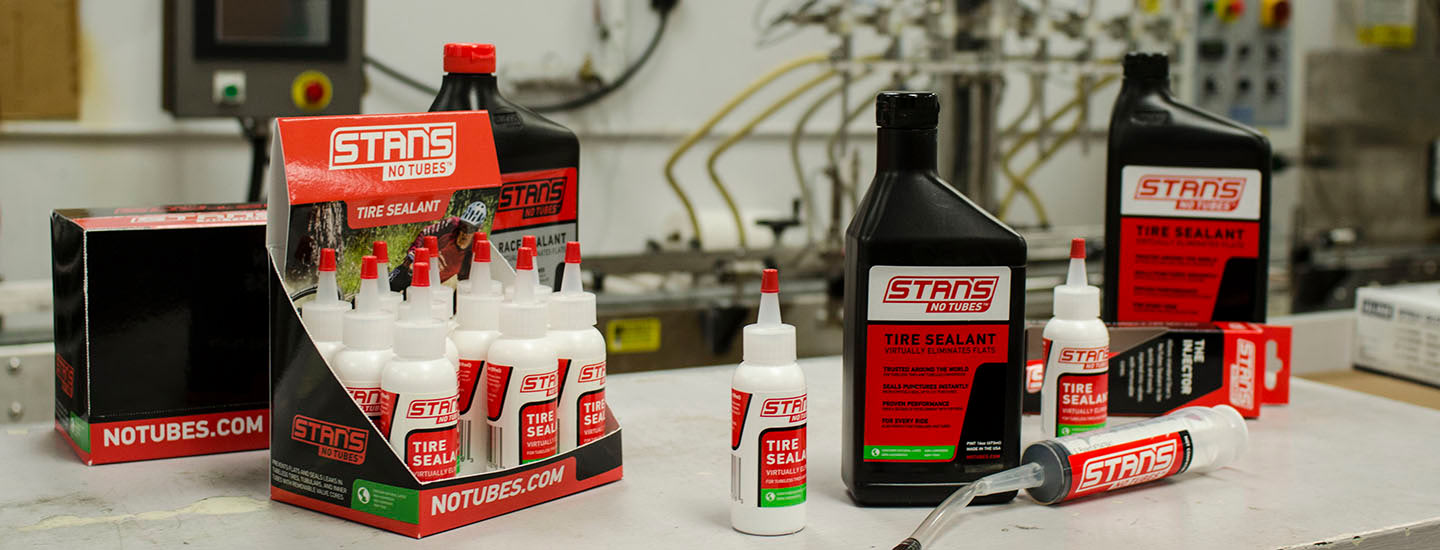Road Tubeless is where the bike industry is headed, but it’s taking a bit longer for road riders to come around. However, we’re seeing more and more Tubeless tech in the pro peloton and that can only mean one thing: Road Tubeless for the masses is coming.
That means plenty of options for everything from lightweight climbing wheels to deep aero rims. Whether you’re building up a feathery race bike or an all-day, all-road Fondo bike, here are the best tubeless-ready road bike wheels we’ve tested.
This list does without superlatives since so many of these have similar characteristics. Instead, we’ve described what we like about them and why, so you can combine that with the specs, prices, and aesthetics to determine which wheelset is best for you. And, like all of our buyer’s guides, this list is updated periodically as new wheels are tested and old models phase out.
Unless otherwise noted, all wheels are available with Shimano, SRAM, and Campagnolo freehub bodies. Scroll to the bottom for our FAQ and buyer’s guide for all the info you need to help choose the best wheels (and tires) for your bike and riding style…
Best Road Tubeless Wheels
ZIPP 303 Firecrest
Need something that’s fast, light, and comfortable and works equally well for road, gravel, and cyclocross? The latest Zipp 303 Firecrest wheelset ticks every box.
Zipp takes the battle-proven 303, itself a tried-and-true option, and makes it wider, lighter, and faster. With an incredibly light rim that’s aerodynamically optimized for modern wide tires and tubeless tech, the 303 Firecrest is a nearly perfect all-around wheel.
It’s among the lightest wheels here and has some of the quickest hub engagement, too. We like the shallower 4omm depth (compared to the 303 S’s 45mm depth). That, plus the extremely light 355g rim weight means this set accelerates quickly and feels very nimble. It’s an extremely versatile depth, perfect for when you need to mount fatter tires for off-asphalt adventures.
Take all that and add in that they’re less expensive than the prior generation standard 303 wheels, and this makes them one of the most affordable high-end wheelsets on this list, too! There’s a reason they made our Editor’s Choice list!
- WEIGHT: 1,392g (632g front / 760g rear)*
- DEPTH: 40mm
- INTERNAL WIDTH: 25mm
- REC. TIRE WIDTHS: 28-55mm
- RIM STYLE: Hookless
- RIDER WEIGHT LIMIT: n/a
- P.O.E.: 66 (5.5º engagement)
- SPOKE COUNT: 24/24
- ROTOR MOUNT: Center Lock
- MSRP: $1,899
PROS: Ultralight, fast, comfortable, and surprisingly affordable.
CONS: Absolutely none.
INDUSTRY NINE I9.45 Carbon
We’ve ridden I9’s 45 Carbon road wheels for years and put so many miles on them we lost count, and they’re still rolling perfectly. That’s even after wrecking into another rider, breaking a spoke, and finishing out a multi-day 240-mile bikepacking trip with zero problems.
The 45mm depth is a nearly perfect blend of aerodynamics and lightweight. They roll down the road smooth, fast, and quiet, and corner sharp, too. They have easily seated and held a wide variety of tire brands we’ve tried on them.
Add in a lifetime warranty and the ability to customize them with any of 11 different hub and nipple anodized colors and they’re basically the perfect all-purpose road bike wheelset. Also available in 35mm and 65mm depths.
- WEIGHT: 1523g (695g front / 828g rear)*
- DEPTH: 45mm
- INTERNAL WIDTH: 21mm
- REC. TIRE WIDTHS: 23-40mm
- RIM STYLE: Hooked
- RIDER WEIGHT LIMIT: 250lb / 113kg
- P.O.E.: 60 (6º engagement)
- SPOKE COUNT: 24/24
- ROTOR MOUNT: Center Lock
- MSRP: $2,350
PROS: Great looks, durable, tons of hub colors, and a smooth, fast ride
CONS: None, really
Princeton Carbonworks WAKE 6560 
Since we reviewed the original Princeton Carbonworks WAKE 6560 “Corsa” aero wheels, they’ve added a wider “Strada” version. The Corsa’s 18.5mm interior width is optimized for traditional 23-25mm tires, while the Strada’s 20.5mm width works for modern 26-32mm tires. Both use a hooked rim that’ll work with tube-type and tubeless tires, but obviously we prefer tubeless.
What separates Princeton’s wheels are their wave-shaped rim profile and these alternate between 60mm and 65mm deep. This gives them a dual advantage – they’re fast like a deep aero wheel in a headwind but able to rebuff crosswinds without being blown sideways. Additionally impressive is how quiet they are, absent that hollow whoosh sound deep carbon rims typically echo through each pedal stroke. These are the deepest rims in this list, with the aero benefits you’d expect, but they ride like something much leaner.
Another thing that separates these from other wheels here are LOTS hub options – choose from White Industries, Tune, Chris King, DT Swiss, CarbonTi, Industry Nine, and Tactic Racing. Then choose from black, white, chrome, or gold decals! (Note: Weight listed below is their lightest Corsa configuration with Tune hubs, our test set used original house-brand hubs and came in at 712g + 831g = 1,543g taped w/o valve stems)
- WEIGHT: 1543g (657g front / 780g rear)
- DEPTH: 60-65mm
- INTERNAL WIDTH: 18.5mm and 20.5mm options
- REC. TIRE WIDTHS: 23-25mm and 25mm+
- RIM STYLE: Hooked
- RIDER WEIGHT LIMIT: n/a
- P.O.E.: depends on hub
- SPOKE COUNT: 16/24 (24/24 available)
- ROTOR MOUNT: Center Lock
- MSRP: $3,000 to $4,150 depending on hubs
PROS: Unique look that delivers real performance benefits.
CONS: Expensive.
Parcours Ronde
The Parcours Ronde are the shallowest rims on this test, and also the most affordable…by a large margin. They’re also really wide, aerodynamically optimized for 28mm tires, and use alternate rim depths from front to rear to optimize them for where they are on the bike.
It’s not just the depth that’s different, they’re actually shaped differently, informed by extensive wind tunnel testing. The Rondes were developed with rough courses and Belgian cobbles in mind, which means they’re also suitable for groomed gravel roads, too. Think of them as a light, fast, aero all-road wheelset that handles quickly, too.
They’re a wheelset that just feels good to ride, good enough to make Tyler’s 2021 Editor’s Choice list. And with the change left over, you can upgrade something else on your bike, too!
- WEIGHT: 1401g (624g front / 777g rear)*
- DEPTH: 35mm front / 39mm rear
- INTERNAL WIDTH: 22.5mm options
- REC. TIRE WIDTHS: 28-42mm
- RIM STYLE: Hooked
- RIDER WEIGHT LIMIT: n/a
- P.O.E.: n/a
- SPOKE COUNT: 24/24
- ROTOR MOUNT: Center Lock
- MSRP: $1,399 (EZO steel bearings) to to $1,779 (Kogel ceramic bearings)
PROS: Light, fast, responsive & super affordable with a beautiful matte finish.
CONS: None, really.
ENVE SES 3.4 AR
No “best of” road bike wheel list would be complete without an ENVE wheelset. Their SES 3.4 AR wheelset blends their Smart aero system with their wide, hookless rim design to create a made-in-America, all-road carbon wheelset.
The 3.4 refers to the depths, and they’re asymmetric from front to rear. The front rim is 39mm deep, and the rear is 43mm deep. These were some of the very first road-specific wheels to use a “straight side” (aka “hookless”) sidewall, so they are designed specifically for tubeless tires only.
Internal rim width is 25mm front and rear, and ENVE optimized them for 28-32mm tires. Then they made them tough enough for cobbles, but still light enough for climbing, and gave them aero shaping to create a true all-around, all-road wheelset. We’ve ridden so many of ENVE’s wheelsets over the years and loved them all, even more because they’re not afraid to get out in front of a trend but spend the R&D time and dollars to make sure it works.
- WEIGHT: 1417g (643g front / 774g rear), with ENVE’s alloy hubs
- DEPTH: 35mm front / 39mm rear
- INTERNAL WIDTH: 22.5mm options
- REC. TIRE WIDTHS: 27-32mm
- RIM STYLE: Hookless
- RIDER WEIGHT LIMIT: n/a
- P.O.E.: 40 (for 9º engagement)
- SPOKE COUNT: 24/24
- ROTOR MOUNT: Center Lock
- MSRP: $2,550 (ENVE alloy or i9 Torch Classic) to $3,000 (Chris King ISO)
PROS: Tough, light, truly tubeless optimized, and Made in USA.
CONS: A little expensive.
Why we picked these wheels
Because they’re wide
If you’re going tubeless, you may as well take full advantage of that and run wider 28-32mm wide tires. Multiple brands have now tested and proven the overall efficiency gains to be had by running wider tires and lower pressures, two things easily afforded by going tubeless.
So, you’ll notice that most of the wheels here are designed around a minimum 28mm road tire. You could still run 25mm tires if you wanted, or even 23’s on the Princeton Carbonworks Corsa model, but we recommend you at least try a 28. Our bet is you’ll never go back to anything narrower.
One caveat: If you have an early disc brake road bike you’re planning to put these on, double check that it will safely clear tires wider than 25mm. Some won’t, but anything launched within the last three years probably will. And remember, a wider rim will make your tire fit wider, too.
*Because they’re light
Obviously, this is a list of the best wheels we’ve tested. Generally, we favor lighter-weight wheels, but that’s just one of many metrics we consider. There are a lot of great wheels that pass through our office every year, but the best ones tend to be light. Lighter wheels will accelerate quicker, climb easier, and turn quicker. Fortunately, composites tech has come a long way, and a really light wheelset doesn’t necessarily mean expensive anymore.
Wheels with an *asterisk by their listed weights are actual weights from our scale, weighed with tubeless rim tape and valve stems installed. This typically means that our listed weights will be a bit heavier than a manufacturer’s claimed weights without tape and valves.
Because they’re from a brand we trust
There are a lot of great brands making great wheels, and we’ve given very positive reviews to many more Road Tubeless wheelsets than are listed here. But the key qualifier is that they’ll all be from a brand that has a proven track record of making durable, high-performance wheels, and offering a solid warranty and customer service.
Frequently Asked Questions
What is a tubeless road bike wheel?
Tubeless road wheels are exactly what they sound like: wheels that don’t require you to run an inner tube.
For this to work, the rim and tire need to have all holes (spoke holes, valve stem hole) sealed. Most brands use tubeless rim tape that seals off spoke holes, which is lightweight but requires a bit of care to install/replace and when using a tire lever (to avoid tearing or puncturing it). Bontrager opts for a plastic rim strip that effectively seals everything off, which is much easier and more durable but adds more weight to the overall system (but, you can use tubeless tape instead if you want).
Some wheel brands simply eliminate spoke holes altogether, creating a seamless rim bed that requires no tape. Spoke nipples are usually fed in through the valve stem hole and pulled into place with magnets, which likely means higher repair costs if you need to have your wheel rebuilt, but tubeless performance will be more reliable.
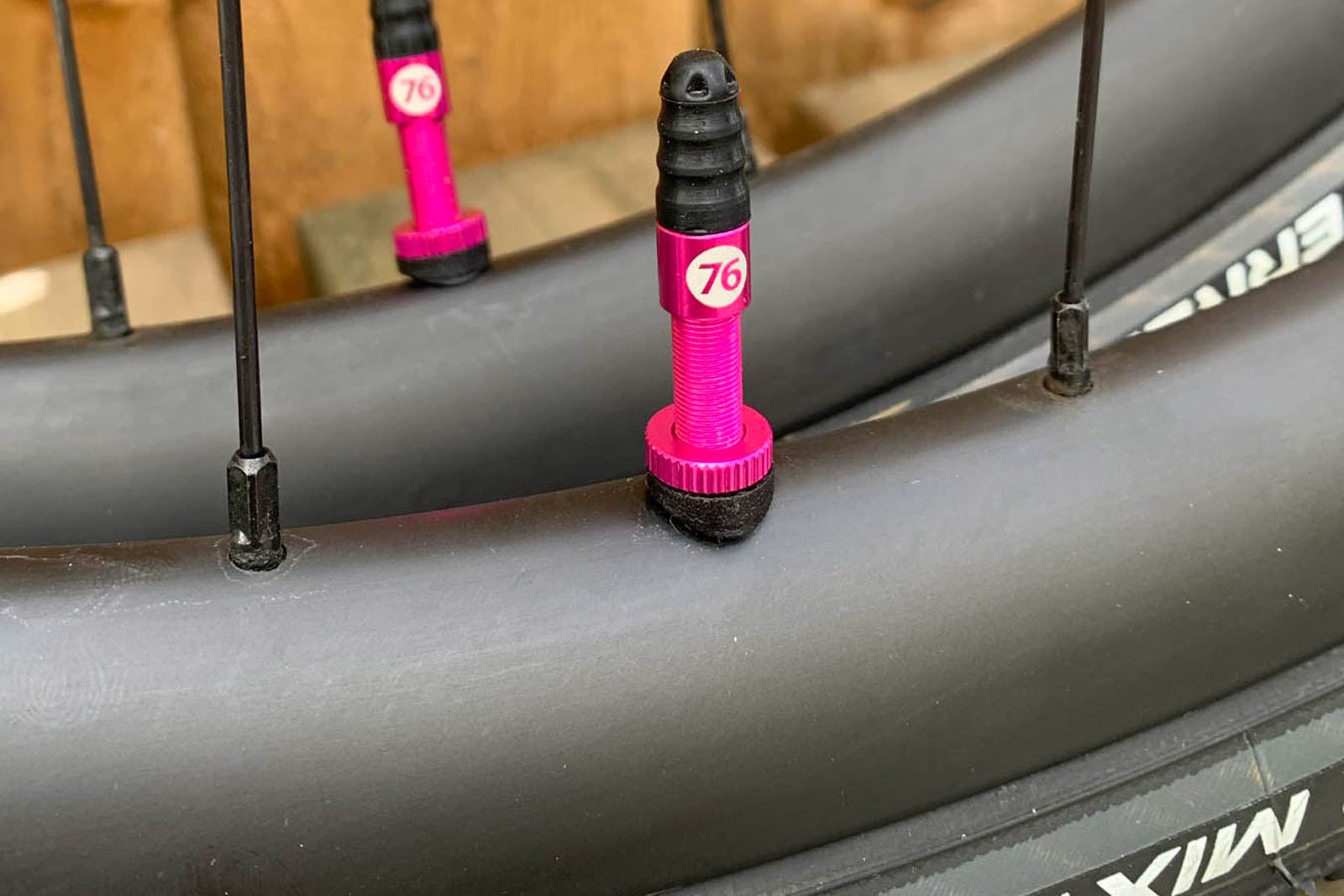
Like MTB tubeless systems, road tubeless wheels use a special tubeless inflation Presta valve stem. This valve fits in the valve hole on your rim, just like a tube’s valve, with a rubber gasket on the inside and a threaded nut on the outside to compress the gasket and seal the hole.
Tubeless valve stems usually have a removable core, making it easier to fill the tire with sealant without having to unseat the tire’s bead. And, this allows more airflow for when you’re first seating a new tire to your rim.
Are Road Tubeless wheels and tires really better?
Tubular tires have long ruled the roost in professional road racing. Clinchers and tubes have been the standard for the rest of us on daily rides. Tubeless road wheels are relative newcomers, but much of the technology has been proven for a decade on mountain bikes.
And, they’ve basically caught up. Most tire and wheel brands now agree that Road Tubeless is the future. It’s far easier to use than tubular tires, and far more affordable, and now they’re basically as (or more) efficient as tubular tires. Compared to tube-type tires with tubes, they’re lighter and roll more smoothly. And they allow for lower tire pressures, which is not only more efficient but also more comfortable and offers better handling. You can read tech stories that back this up here and here. Even the pros are switching over.
The other benefit? The sealant can plug a puncture or small cut quickly, sometimes before you even need to pull over. And if not, you can simply plug your tire rather than have to pull it off the rim to insert a tube. Worst case, you can just stick a tube in as a last resort.
Why is Road Tubeless taking a while to catch on?
A big part of the problem was a lack of standards. And, honestly, roadies are more resistant to change. Setting up tubeless tires can be a pain in the but, especially before rim and tire brands started working together and using a shared ETRTO standard.
In the early days, some rim and tire combos simply didn’t work together, but it was hard to tell what would and wouldn’t work together until you tried it. That led to frustration, and a lot of folks just said screw it and stuck with tubes. Fortunately, things are dramatically better, and tubeless-ready wheels and tires released in the past couple of years will likely seat up and seal quickly and easily.
If you want the full history, check out our two-part series on Road Tubeless development to go down the rabbit hole.
What are hooked vs hookless tubeless rims?
Clincher rims come in two general varieties: hooked and hookless. Hooked, or “crotchet” style, rims feature a lip on each of the top edges where the tire mates to it. These lips, or hooks, help keep the tire locked into place.
Hookless rims, also called TSS (Tubeless Straight Side), do not have such hooks, obviously. Instead, the tire presses outward against the rim’s wall and creates a seal inside a rim bead seat. The tire’s bead, in other words, sits in a shallow channel, creating an air-tight seal from the air pressure.
Hookless rim construction is cheaper and less complicated, actually allows the wheels less expensive while also being stronger and better. The shape of the tire changes slightly, too – the mating of the tire and rim creates less turbulence because the transition from the tire to the rim is smoother. That means a hookless setup is, in theory, more aerodynamic.
You can read our full technical explanation of Hooked versus Hookless rims for a deeper dive on why we think they’re a better overall standard.
TIRE & SEALANT FAQs
Does it matter which tubeless tire I use?
As long as the tire clearly labels itself as “Tubeless Ready” or “Tubeless Compatible” than it will work with any modern tubeless-ready rim. Beyond that, you’ll want to pick the best tire for your riding conditions and needs. Our list of the Best Road Tubeless Tires has a great FAQ about how to choose the right Road Tubeless bike tire.
Can I mount a non-tubeless tire on a tubeless rim?
Maybe, but you have to mount it with a tube, and ONLY if the rim has a bead hook…do NOT mount a standard tube-type tire on a hookless rim.
Assuming your rim has a bead hook, a non-tubeless tire might seat and seal. But since it’s not designed for tubeless use, it is far more likely to leak air. Or it could burp or slip off the rim; the bead’s shape and material are not optimized for a tubeless rim and may not stay seated as well, which presents a serious safety hazard.
Your best bet is to just use tubeless-ready tires.
Can I mount a tubeless tire on a non-tubeless rim?
Yes, but you won’t get the benefits of a tubeless system. A non-tubeless rim is NOT designed to be run tubeless. You can seal it with tubeless rim tape and it may work just fine, but…it may not, which could be a safety issue. But, also, a tubeless tire is generally heavier than a tube-type tire, so if you’re running a tubed setup anyway, you’re not gaining anything by using a tubeless tire.
Can I run a tubeless road tire and rim without sealant?
Yes, you can. In fact, while sealant does sometimes help seal air leaks at the bead, that isn’t the intended purpose. Instead, sealant is used to help seal small punctures in the tire. Still, it’s best to use sealant, as it often makes it easier to initially seat the tire and will seal small holes as you ride. Short answer: You don’t need sealant, but you should definitely use it.
Are all tubeless sealants the same?
Nope! There are latex-based sealants and latex-free sealants. Both serve the same purpose: sealing holes in your tire. But latex-based sealants do this with latex, while latex-free sealants eliminate the latex entirely and mostly rely on other physical ‘stoppers’ in the goop.
Are road tubeless tires heavier?
Sort of. Yes, but not as a system. Tubeless tires themselves are indeed heavier than tires intended to be used with tubes, since tubeless tires have to be reinforced to prevent air leaks. But you’re also eliminating the weight associated with an inner tube, so the total weight (including sealant) is probably about the same or perhaps a few grams lighter than a tubed setup. The weight isn’t the point, though…it really is about better performance.
Are road tubeless wheels heavier?
Not really, and now that we’ve mostly switched to disc brakes, the rims can be lighter, which means less rotational mass at the outer circumference. Even as rims have gotten wider, new designs and hookless beads have allowed them to become lighter and stronger. On average, switching from tubed to tubeless will not increase the weight of your wheel-tire system.
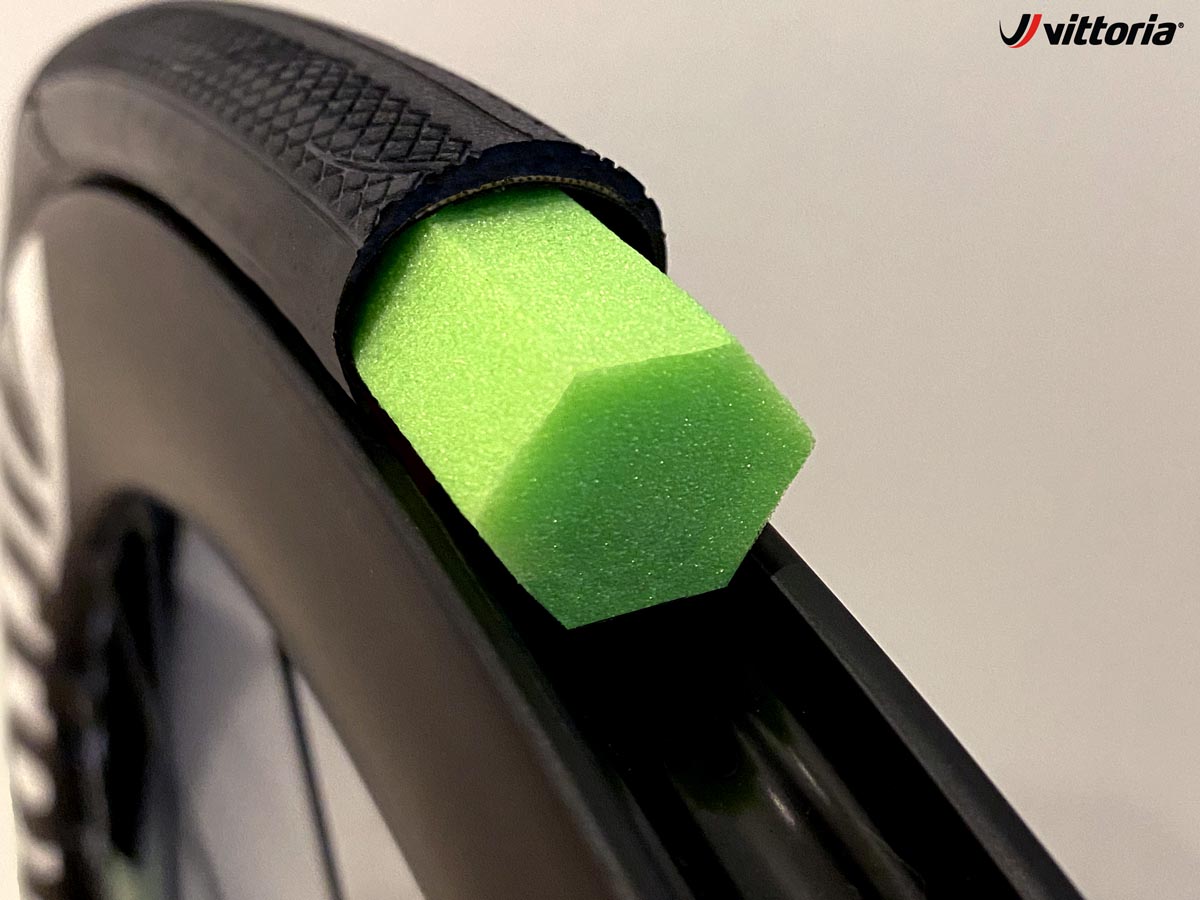
What about tire inserts?
Some mountain bikers use a foam-like insert to protect against pinch flats and major impacts, particularly when running very low tire pressure. While you probably won’t be running PSI in the low 20s or teens on a road bike, an insert can help against pinch flats or even help hold the tire’s shape during a blowout. If you constantly riding over potholes and curbs, a tire insert (and a very durable tire) could help.
Road Tubeless Terminology
- Bead seat: On a tubeless rim (both hooked and hookless), the bead seat is a channel on either side of the rim that catches and holds the tire’s bead. This is where the airtight seal between tire and rim takes place, often delivering a satisfying “pop” when the tire’s bead finally snaps into place, which lets you know it’s fully seated.
- Hooked rim: A rim that features a hook, or a protrusion, on which the tire’s bead catches. This helps create the seal between the tire and the rim, and helps prevent the tire from ‘burping’ off the rim.
- Hookless rim: A rim that does not have a hook. The inner sidewall is straight, hence the technically accurate TSS nomenclature, for Tubeless Straight Side.
- Tubeless: The elimination of an inner tube in a wheel/tire system. Tubeless systems rely on an airtight seal between the tire and the rim in order to allow inflation of the tire.
- Sealant: A liquid that can be placed within a tubeless tire/rim combination. The sealant can be latex-based or latex-free, but the function is the same: to seal small punctures in the tire.
- Hysteresis: A time lag between when a tire encounters an obstacle and when the tire deforms around that obstacle. Since tubeless tires run lower tire pressures, a tubeless system generally has better hysteresis performance, which means it loses less energy to such impacts.
- Contact patch: The part of the tire that makes contact with the road surface at any given time. Tubeless systems allow users to run lower tire pressures, which creates a wider contact patch. This in turn lowers rolling resistance and increases cornering grip.
- Tire bead: The part of the tire that mates with the rim. The bead can be made from a variety of materials, but in most cases, tubeless road tires will feature a non-stretchable kevlar bead. This gives the tire structure and helps prevent deformation when the tire is under pressure.
- Tubeless valve: Also called a “valve stem”, they’re the piece that sticks out of your rim that you attach your pump to so you can inflate your tire. They look the same as a valve you’d see on an inner tube, but a tubeless valve features a rubber gasket that sits within the rim bed. A valve nut helps secure the valve in place, and the rubber gasket helps create an airtight seal. Most tubeless valves also feature a removable core, which makes it possible to insert tubeless sealant through the valve into the tire.
Got questions about Road Tubeless wheels? Leave them in the comments and we’ll answer! As always, our Buyer’s Guides are living documents, updated as the technology evolves. Our product recommendations may be updated or replaced as new wheels are tested, so check back anytime you’re in the market for a new set of road bike wheels!
